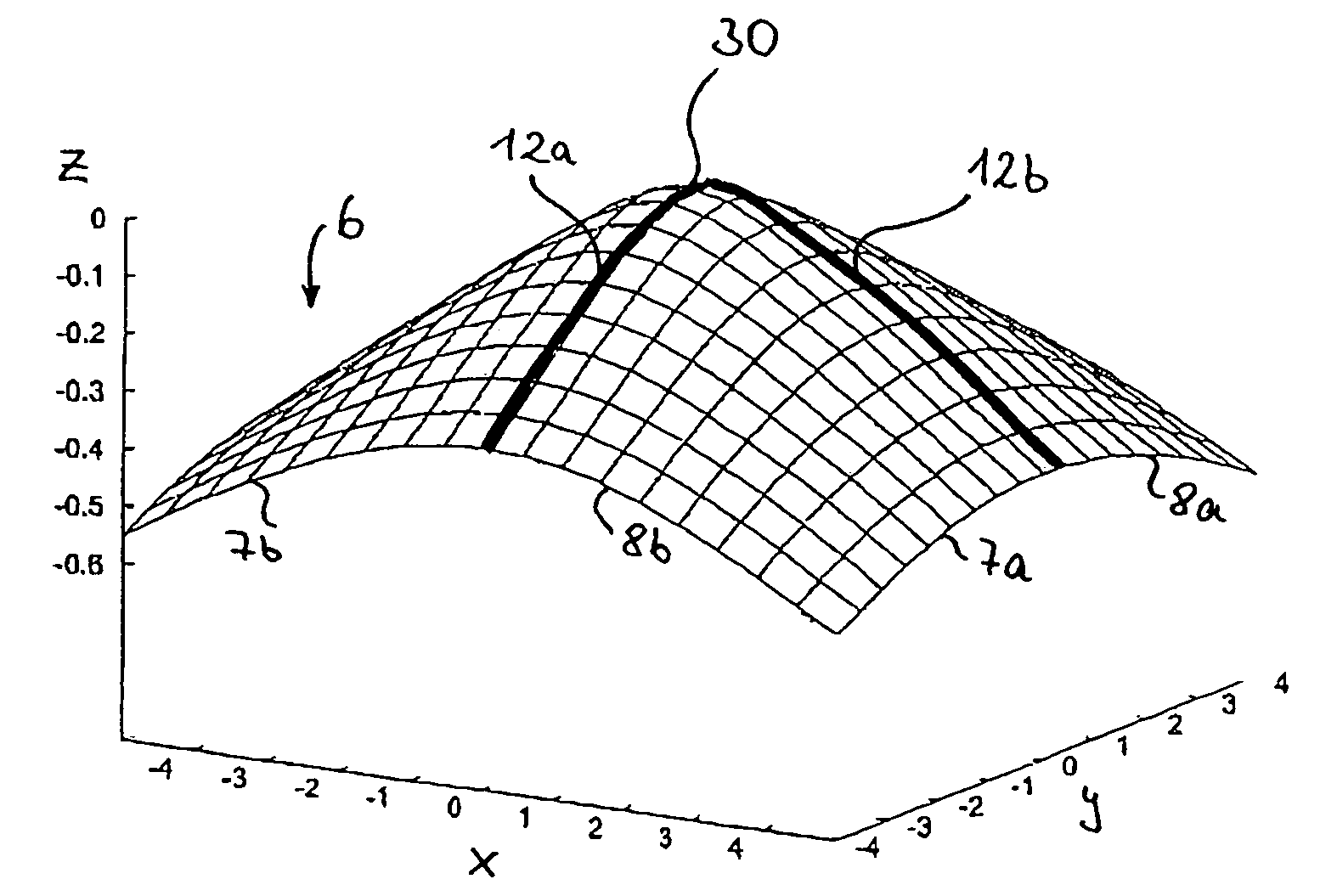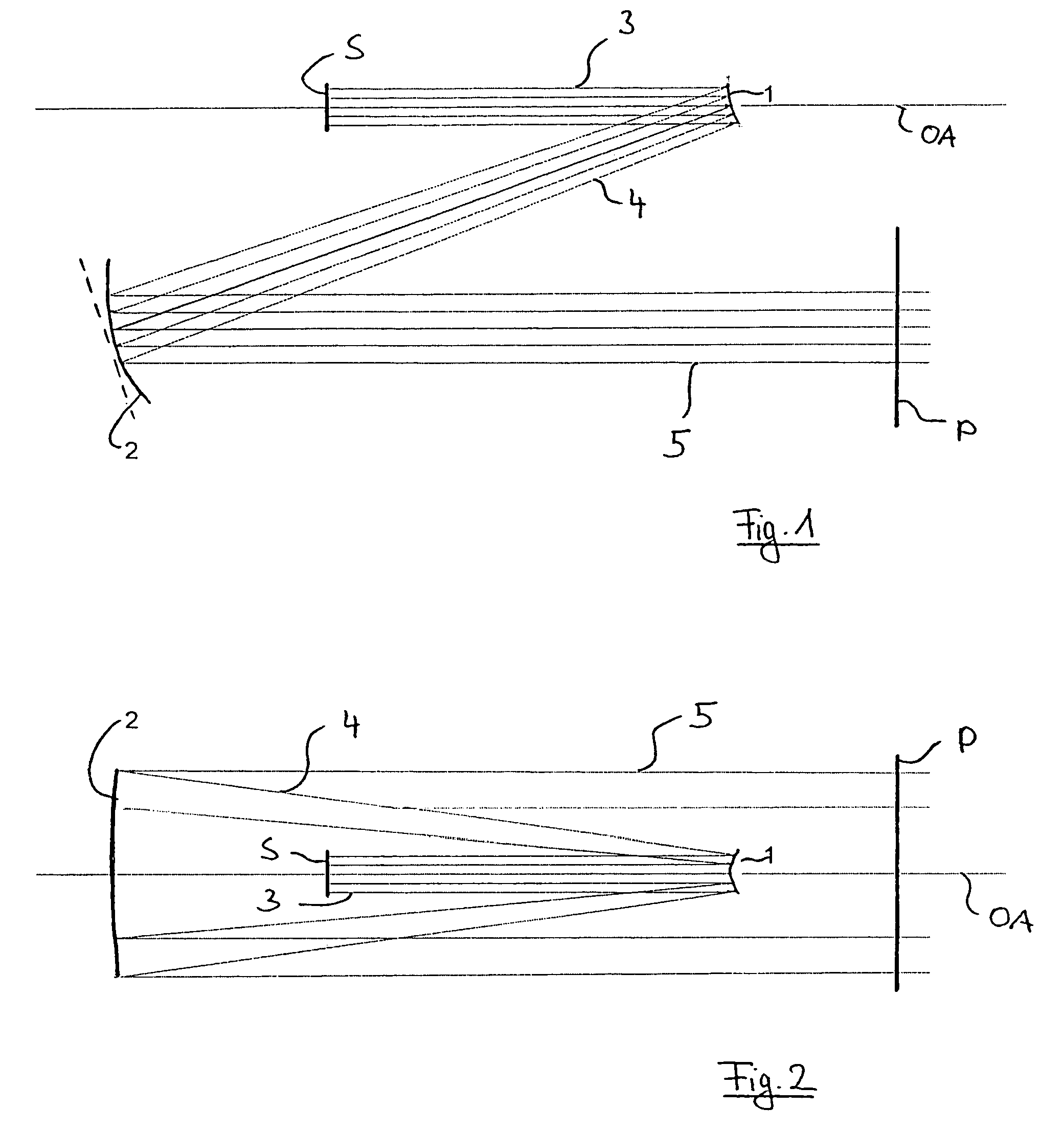Illumination device and its use
a technology of a chromatic device and a beam intensity, which is applied in the field of chromatic devices, can solve the problems of poor efficiency in the utilization of beam intensity originally generated, and the approach of u.s. patent no. 4,862,299 is unsuitable for chromatic reasons, and achieves the effect of compact design
- Summary
- Abstract
- Description
- Claims
- Application Information
AI Technical Summary
Benefits of technology
Problems solved by technology
Method used
Image
Examples
Embodiment Construction
[0033]FIGS. 1 and 2 show an illumination arrangement in which radiation from a radiation source S is re-formed with respect to its beam profile. FIG. 1 is a section in a (z, x)-plane. FIG. 2 is a section perpendicular thereto in a (z, y)-plane. The radiation source S transmits a beam which is profiled to be Gaussian-shaped in each sectional direction perpendicular to the direction of propagation. After the re-formation a beam is present in a profile plane P which illuminates essentially a rectangular field, where the intensity distribution is not Gaussian-shaped along the longitudinal field axis but rather chest-shaped.
[0034]For beam forming, an aspherical mirror 1 is used which expands the radiation. The expanded radiation is parallelized once more by means of a collecting mirror 2. The aspherical mirror 1 is struck by an original beam 3 from the radiation source S, said beam having said rotationally symmetric Gaussian-shaped beam profile. The aspherical mirror 1 is curved in the s...
PUM
 Login to View More
Login to View More Abstract
Description
Claims
Application Information
 Login to View More
Login to View More - R&D
- Intellectual Property
- Life Sciences
- Materials
- Tech Scout
- Unparalleled Data Quality
- Higher Quality Content
- 60% Fewer Hallucinations
Browse by: Latest US Patents, China's latest patents, Technical Efficacy Thesaurus, Application Domain, Technology Topic, Popular Technical Reports.
© 2025 PatSnap. All rights reserved.Legal|Privacy policy|Modern Slavery Act Transparency Statement|Sitemap|About US| Contact US: help@patsnap.com



